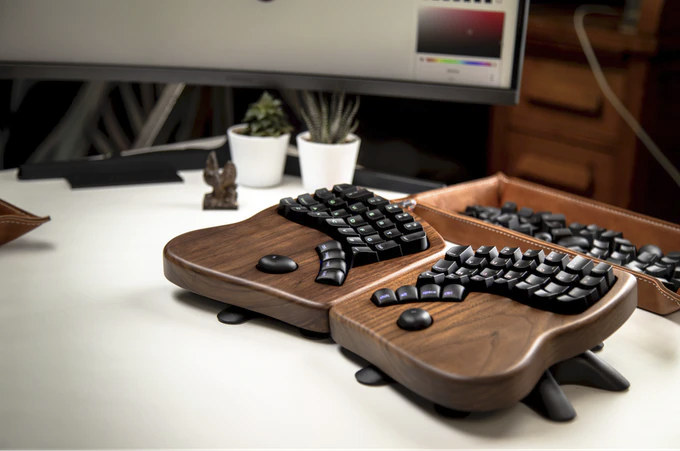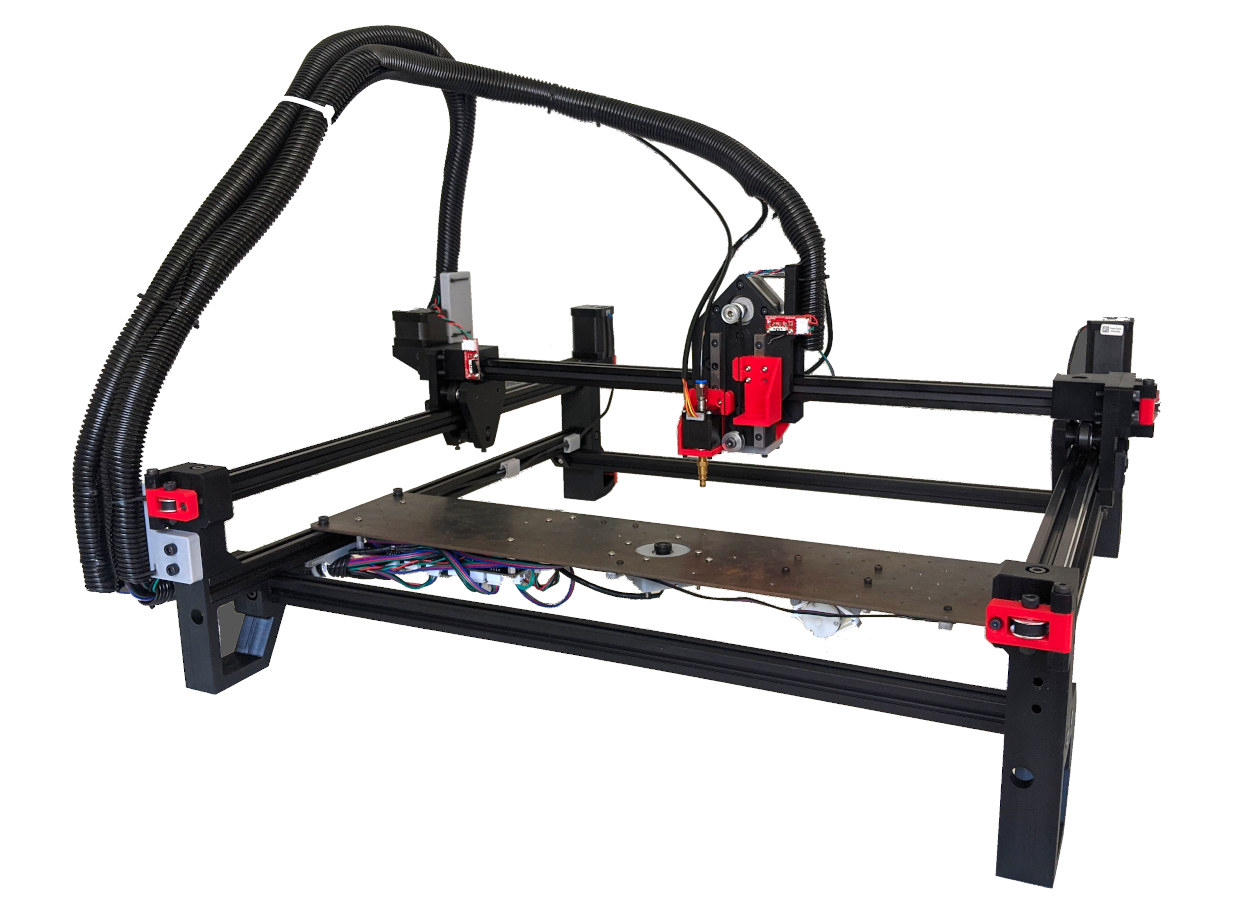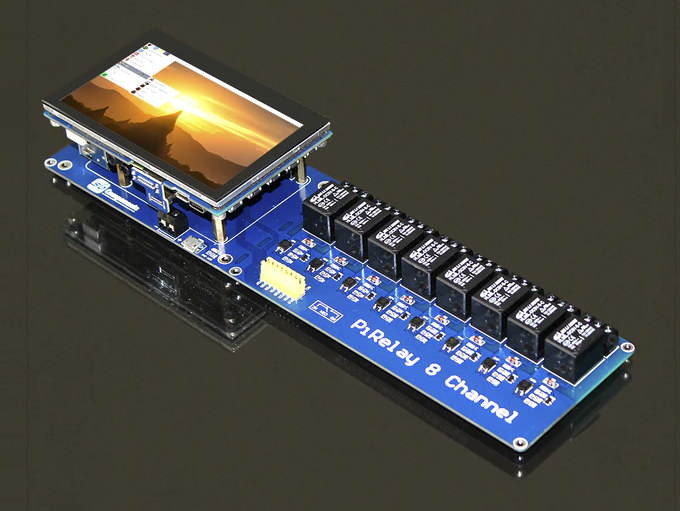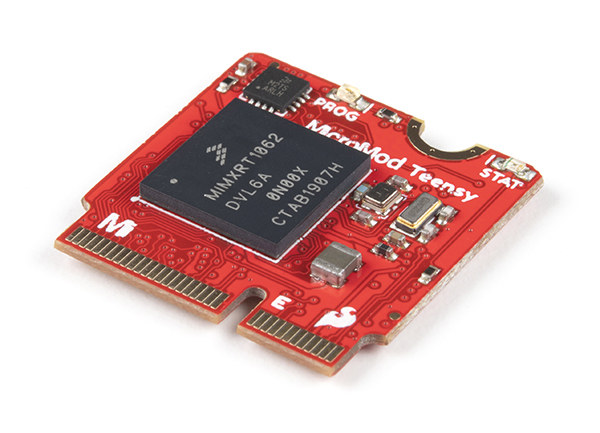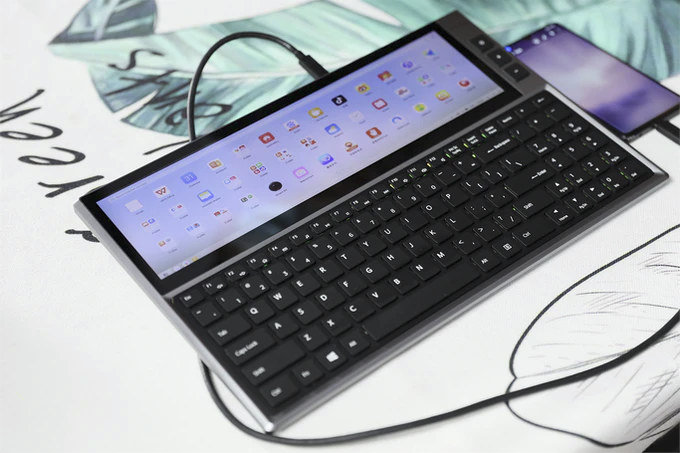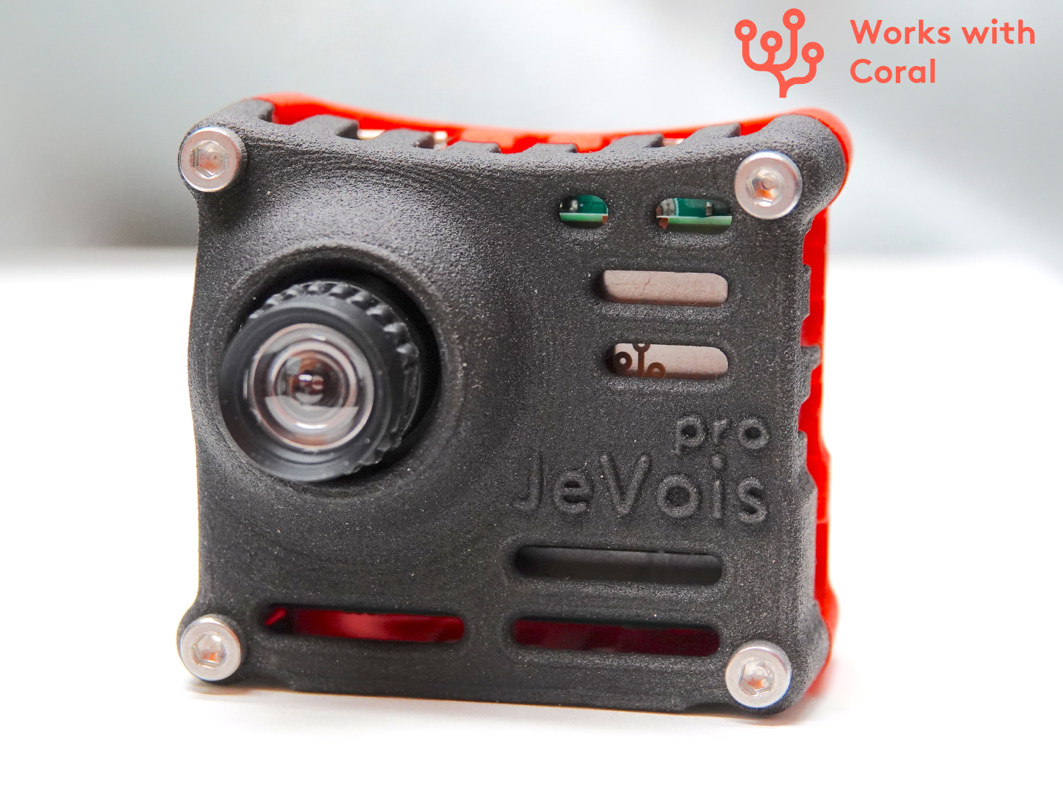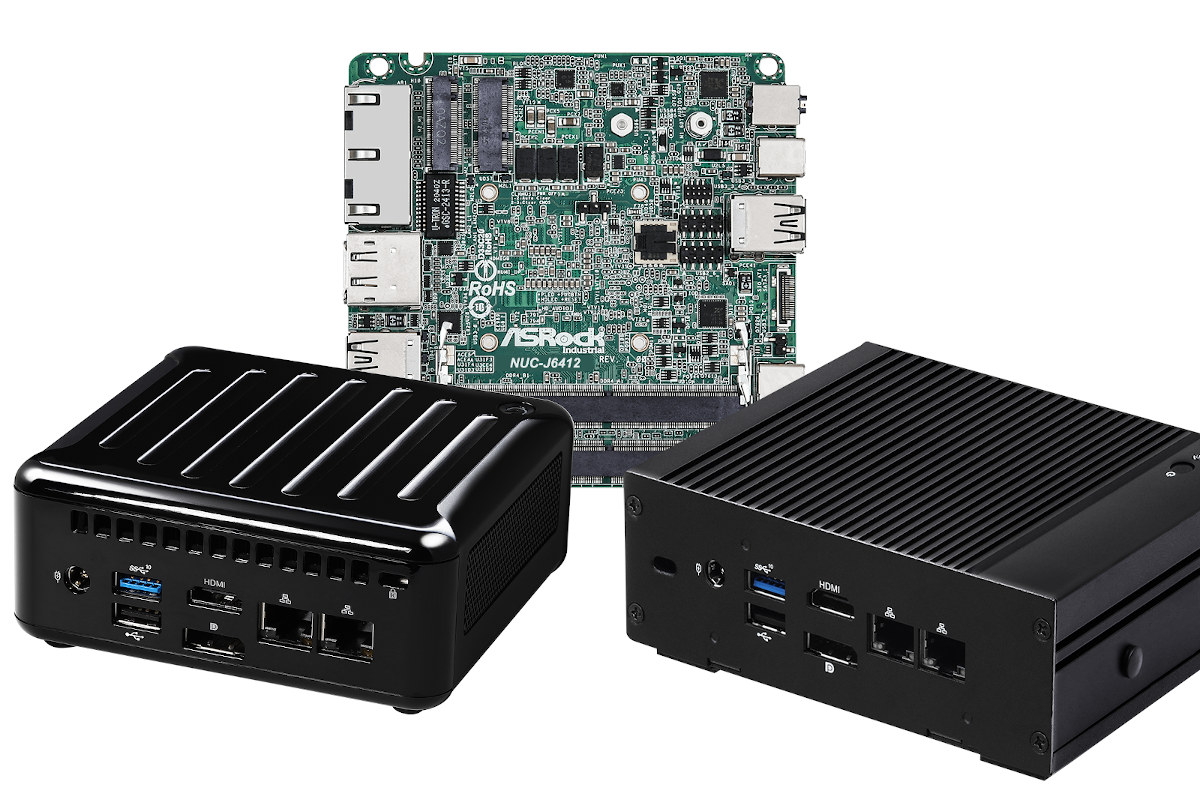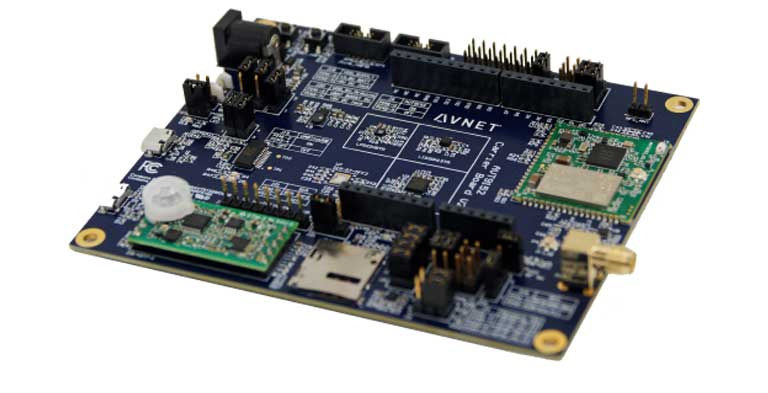Are you bored with keyboard news yet? Keyboardio Model 100 does not quite look like most keyboards though. It’s basically a piece of art with an enclosure made of walnut or maple hardwood, and designed as an ergonomic keyboard with left and right parts with a total of 64 mechanical switches with RGB LEDs and custom-sculpted keycaps. Keyboardio Model 100 also runs Kaleidoscope open-source firmware programmed in the Arduino IDE, and can be customized by the user with Chrysalis open-source, cross-platform graphical configuration tool. The community is also working on porting QMK firmware to the keyboard. The Keyboardio Model 100 ships with QWERTY keycaps, but alternative keycap sets with Dvorak, Colemak, Linear A, or blank legends are available as a add-on. Other accessories include a 1.5 USB-A to USB C cable for connection to the host, a 10cm RJ45 interconnect cable and a 1m RJ45 interconnect cable to connect the […]
Index PnP – An open-source pick-and-place machine for mid-scale manufacturing
We’ve previously written about one open-source pick-and-place machine, SimplePNP aiming to provide a low-cost solution for several hundred dollars and relying on OpenPnP open-source control software. But Stephen Hawes found out this type of solution did not cut it for mid-scale manufacturing (100 to 5000 units per year), so he decided to build his own. Meet Index PnP, an open-source pick-and-place machine designed for mass-production volumes typical of crowdfunding projects. The project was introduced launched with the following requirements Automated – no human interaction necessary from attaching the paste-applied board to the machine to having a board ready for reflow Capable of picking and placing components down to 0603 passives Integrated up and down vision for fiducial scanning and on-nozzle component alignment Automatic nozzle tip changer to support a wide range of component sizes Frame and motherboard design capable of future upgrades Mechanical and Electrical support for conveyor belt module […]
Relay expansion board for Raspberry Pi includes 4.3-inch touchscreen display (Crowdfunding)
There are plenty of multi-relay boards for Raspberry Pi, but since those are often combined with an HMI for control, SB Components decided to offer an all-in-one solution with an expansion board equipped with eight relays and a 4.3-inch touchscreen display connected to a Raspberry Pi via HDMI and USB. PiRelay 8 specifications: Relays 8x relays with 3.3V/5V trigger signal Input – 250V AC/7A, 30V DC/10A Screw terminal blocks NO (Normally Open) and NC (Normally Closed) modes available Isolation – EL357NC optocouplers with current transfer ratio (CTR) of 50-600% at IF=5mA, VCE=5V Display support – Optional 4.3-inch touchscreen display with 800 x 480 pixels resolution, HDMI input for video, USB for touchscreen support. It also comes with a 3.5mm audio jack, an HDMI audio output, a speaker connector, and mounting holes for the Raspberry Pi. 40-pin GPIO header to connect a Raspberry Pi SBC (Pi 4, Pi 3B+, Pi 3, […]
MicroMod Teensy brings Teensy 4.0 board to M.2 form factor
Teensy 4.0, a low-cost board based on NXP i.MX RT1062 Arm Cortex-M7 crossover processor, is now getting a little brother with MicroMod Teensy following the same M.2 form factor as other Sparkfun MicroMod boards. Born from a collaboration between PJRC and Sparkfun, MicroMod Teensy has essentially the specs of Teensy 4.0 but with larger flash memory, and the board will be fully supported by the Teensyduino add-on to the Arduino IDE as noted by Paul Stoffregen on Twitter. MicroMod Teensy specifications: SoC – NXP i.MX RT1062 Arm Cortex-M7 processor at 600 MHz with 1024KB RAM (512KB is tightly coupled), Storage – 16MB serial flash (instead of 2MB on Teensy 4.0) M.2 MicroMod connector with USB Device up to 480Mbit/sec: Capable of enumerating as a USB keyboard, mouse, joystick, MIDI, audio, and more USB Host up to 480Mbit/sec: Capable of interfacing to USB flash drives, mice, keyboards, and more 7x Serial […]
FICIHIP multifunctional keyboard includes 12.6-inch touchscreen display (Crowdfunding)
Keyboards have made the news in recent months with stories ranging from a customizable programmable keyboard, to a keyboard part of a USB-C dock, and a 2-key open-source keypad. FICIHIP multifunctional keyboard is special in its own way as besides a traditional QWERTY keyboard is also includes a 12.6-inch touchscreen display which makes it looks like a computer, but no, it’s really just a USB keyboard that happens to come with a display design for computers and smartphones. FICIHIP multifunctional keyboard key features and specifications: QWERTY keyboard with RGB backlight and hot-swappable mechanical keycaps for DIY layout on K2 model only Display – 12.6-inch screen with 1920×515 resolution @ 60 Hz, 10-point multitouch panel HDMI input – HDMI 1.4 port USB – USB 3.1 Type-C port, 2x USB 2.0 ports Aluminum body That means the keyboard acts as a second display either through the USB-C port when connected to a […]
Jevois Pro small AI camera with Amlogic A311D SoC offers up to 13 TOPS (Crowdfunding)
Jevois-A33 smart camera was a tiny Linux camera with Allwinner A33 processor designed for computer vision applications and announced in 2016. I had the opportunity to review the computer vision camera the following year, and it was fun to use to learn about computer vision with many examples, but since it relied on the CPU for processing, it would not have been suitable for all projects due to the lag, as for example, object detection took 500ms and Yolo V3 around 3 seconds per inference. But time has passed, and great progress has been made in the computer vision and AI fields with the tasks now usually handled by a built-in NPU, or an AI accelerator card. So JeVois Pro deep learning camera has just been launched with an Amlogic A311D processor featuring a 5 TOPS NPU, and support for up to 13 TOPS via a Myriad X or Google […]
ASRock Industrial announces Intel Elkhart Lake mini PCs and motherboards
Intel Atom x6000E Series, Celeron, and Pentium Elkhart Lake processors for IoT Edge applications were launched in September 2020, with many companies shortly introducing modules, single board computers, motherboards, and industrial, rugged mini PCs after the official announcement. ASRock Industrial took more time to announce their Elkhart Lake offerings, with three families of hardware platforms with NUC 6000 BOX Series and IBOX 6000 Series mini PCs, as well as NUC 6000 Motherboard series. We’ll have a look at the three families in detail below, mostly using information from products based on Celeron J6412, one of the more recent Elkhart Lake processors that was launched in Q1 2021. ASRock NUC 6000 Motherboard Series Specifications: SoC (one or the other) Intel Celeron J6412 quad-core processor @ 2.0/2.6 GHz (Turbo) with 1.5MB cache, 16 EU Intel UHD Graphics; 10W TDP Intel Celeron N6210 dual-core processor @ 1.2/2.6 GHz (Turbo) with 1.5MB cache, 16 […]
Avnet AVT9152 – nRF52840 & nRF91 IoT module and devkit
Avnet AVT9152 is an IoT module and development kit that combines two Nordic Semi wireless solutions, namely nRF52840 Bluetooth 5.2/LE multiprotocol SoC and nRF91 IoT cellular system-on-module with NB-IoT, LTE-M, and GPS connectivity. The module supports Avnet’s enterprise-ready IoTConnect Platform, and the development kit combines with IoT module with a 3-axis accelerometer, a 3-axis gyroscope, as well as pressure, temperature, relative humidity, ambient light, and motion (PIR) sensors to help with the development of IoT applications such as tracking devices, vending machines, points-of-sale, smart buildings, industrial IoT, and more. Avnet AVT9152 module – nRF52840 + nRF91 Key features and specifications: Wireless SoC/SiP Nordic Semi nRF9160 Cortex-M33 based system-in-package (SiP) with LTE-M/NB-IoT global carrier certification for LPWAN connectivity; support for power save mode, PSM and eDRX Nordic Semi nRF52840 Cortex-M4F microcontroller with Bluetooth 5.0 and Bluetooth LE for short-range communication Flexible LTE and GPS antenna options 50x castellated holes with UART, […]


